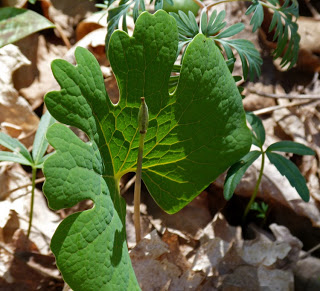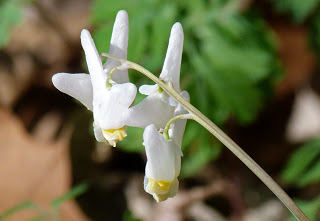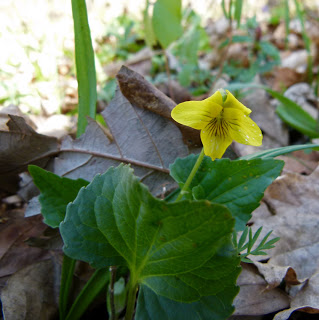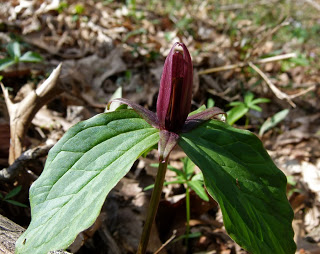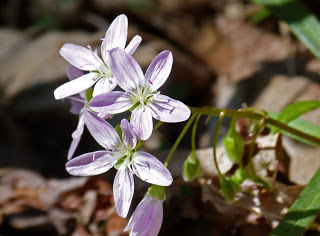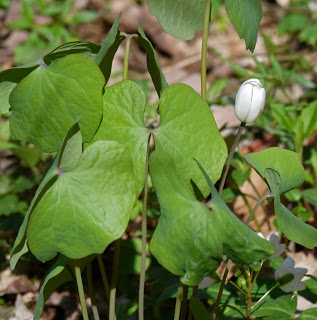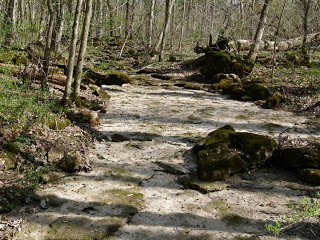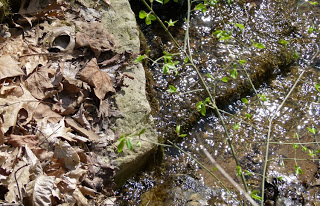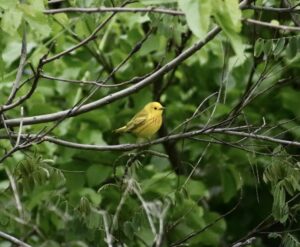During the last week, we’ve had rain, snow, sunshine, warm temperatures, and cold temperatures. In other words, typical for late March in Kentucky. The spring wildflower season is progressing too.
Last time, we looked at the Yellow Trout Lily. Now the Beaked Trout Lily is blooming. It’s similar to the Yellow, but notice how all the petals do not “recurve,” that is, curl back up over the blossom.
Bloodroot is about finished blooming. You may see the leaves, with a small seed pod where the blossom had been during its short time with us.
Dutchman’s Breeches grow atop feathery leaves in the brown leaf mulch. Squirrel Corn is a look-alike, often confused with Dutchman’s Breeches, but Squirrel Corn has a tall vertical stalk and spurs that are more rounded, appearing somewhat heart-shaped.
Tavia: This plant gets its common name from the flowers, which resemble the baggy pants worn by “Dutchmen” hanging upside down on an arching clothesline. Some Native American tribes used this species as a love charm, saying that if the root was nibbled by a man, his breath would attract a woman, even against her will.
When looking for wildflowers, it’s important to get down on your knees to appreciate the intricate and delicate structure of many blossoms. Several species will often grow close together, and you can’t tell which bloom goes with which leaf without bending down to trace the flower’s stem into it’s leaf structure. A “weed” is just a wildflower growing where some human might not want it, but they are just as beautiful as any rare blossom. The small flower in the center of this photo is Henbit, a member of the mint family, and is seen in open areas, lawns, fields, and waste places.
Not all Violets are actually violet in color. Today I found some lovely Yellow Violets. The stripes remind me of faces, although it’s more likely that they guide pollinators to the nectar.
Tavia: The flowers and leaves of Violets are very high in vitamins A and C. Pound for pound, violet blossoms are said to contain more vitamin C than oranges! They are also wonderful to eat raw or in salads or to decorate a cake.
Yes, I get carried away, or maybe I should be carried away sometimes, but do you see the ballerina in this Trillium, wearing a long green skirt, and reaching above her head with purple arms?
Spring Beauties carpet the forest floor, yet from a distance they disappear altogether. Again, walk slowly, looking both down into the valleys and up along with hillsides to see their small blooms with pink stripes.
Virginia Bluebell is starting to come out now. As the buds emerge, they look purple, then change to blue as they open. They can be found in moist or wet woods, meadows, bottomlands and thickets, often forming spectacular colonies.
Tavia: The stems of this species are nearly hollow, making the plant somewhat fragile. After flowering, the foliage turns yellow and the entire plant will seem to disappear, going dormant until the following spring.
Last week I said the Twinleaf was just beginning to bloom. Well, this week, the Twinleaf is just about finished, and I missed most of it. 🙁 Spring emphemerals are like that.
This part of Kentucky is situated on limestone, which is a very permeable kind of rock. It can be dissolved by acidic water, which is how Mammoth Cave was formed over many millions of years. In our area, this means that small caves and sinkholes can be found. Often, a creek will flow swiftly downstream, delighting the ear with its chuckles, and then a few feet later, the creek bed is completely dry.



